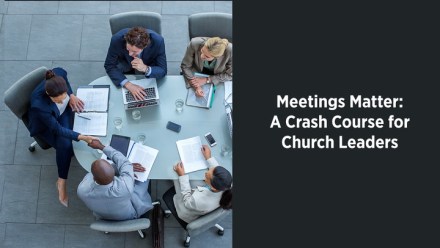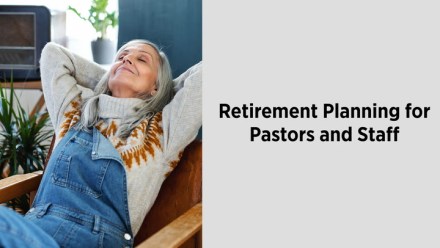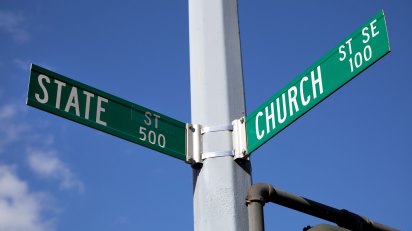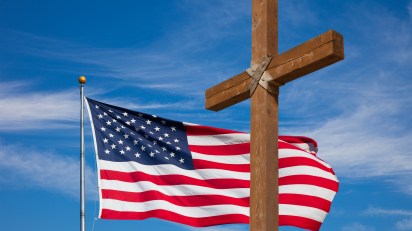Several years before the COVID-19 pandemic struck, I examined the question of what rights the government had to require vaccinations, particularly with regard to children. In a 2015 article for Church Law & Tax, I offered these reasons why parents may choose not to vaccinate:
Some have done so for religious reasons, some because of their personal beliefs, some because they are concerned about possible side effects from the vaccinations themselves, and a few for medical reasons.
Since then, the question of how parents choose to handle vaccinations has rapidly expanded in light of the pandemic. State governments, as well as the federal government, have explored ways to mandate the vaccine developed in response to COVID-19. Similarly, the federal government and state governments have worked to determine how other precautionary measures, such as masks, can be mandated.
These developments have posed unique challenges for churches and church leaders, especially those congregations that run nurseries, daycares, and schools. Do churches and church-run schools fall under government-mandated requirements, whether pertaining to the COVID-19 vaccination or masks? This article examines this question and provides nine considerations regarding how churches should respond.
Background
When I wrote the 2015 article, it was clear that vaccine laws were in the purview of state governments. Each state’s law significantly varied. The state laws in effect at that time, which appear to have changed little since then, were almost exclusively focused on requiring children to have certain vaccinations in order for them to attend public schools. The required vaccinations were—and still are—for common diseases such as measles, mumps, chicken pox, and the like, many of which have had vaccines available for more than 50 years.
All states allowed medical exemptions to vaccinations, and the vast majority also provided for religious exemptions. A few allowed a broader personal exemption. For a religious exemption to be available, some states required that an individual belong to a religious organization that holds these beliefs; some required physician counseling as part of the religious exemption; and at least one state gave the local school authority the right to determine if there was actually a valid religious exemption. In other states, the officials took the exemption claim at face value.
The controlling law still is principally based upon a 1905 case in which the United States Supreme Court held that it is within the police power of each state to enact a compulsory vaccination (specifically addressing smallpox). Further, the Court stressed that it is up to the legislature, rather than the courts, to determine if vaccination is the best method of protecting public health and safety (Jacobson v. Massachusetts, 197 US 11 (1905)).
Even though this case was brought by an adult, the Court made approving references to the various state laws requiring smallpox vaccinations for children to attend public schools.
The Court also noted: “The safety and the health of the people of Massachusetts are, in the first instance, for that commonwealth to guard and protect. They are matters that do not ordinarily concern the national government.” Although there may be a reason to involve the federal government in some instances, this was acknowledged to be the exception.
Smallpox was ultimately eradicated, but other outbreaks of concern, particularly measles, have since arisen and often involved religious communities. In 1991, for example, unvaccinated students attending two church schools became ill from the measles, although the epidemic did not start with either church.
Prayer did not keep the disease at bay, and it spread to the students’ families as well. Among those infected, 486 belonged to the two churches, as did 6 children who died from the virus.
Despite the religious exemption, and to stop the spread, public officials “did something that had never been done before or since: They got a court order to vaccinate children against their parents’ will. Children were briefly made wards of the state, vaccinated, and returned to their parents,” according to the New York Times.
This was obviously an extreme and unusual situation. In fact, even in the 1905 Jacobson case where the state made the smallpox vaccine compulsory, the penalty for noncompliance was not the imposition of an unwanted vaccine, but rather, a $5 fine for adults (equivalent to $158.41 today). Children could be exempted with a note from their physician.
COVID-19 pandemic: an overview
As noted above, prior to the global pandemic’s arrival in 2020, most vaccine concerns and laws focused on requiring children to be vaccinated before they could attend public schools. Some state vaccination laws expanded to include vaccination requirements for students of private schools and colleges and universities, along with some healthcare workers.
This focus changed when COVID-19 began spreading worldwide throughout 2020. The old, the infirm, and those with underlying health conditions found themselves most at risk of becoming sick and dying.
Initial uncertainties about the severity of the virus for the general population, coupled with COVID-19’s rapid spread worldwide, led to significant concerns throughout the country.
Government entities developed mandates aimed at limiting the spread of the virus. This initially included limiting the ability of people to engage in activities outside their homes, designating some businesses as essential and closing others, limiting the number of unrelated people who could associate, requiring that everyone stay at least 6 feet apart, and requiring masks (both inside and outside).
The thought was that if everyone stayed at home for 14 days, it would prevent much of the spread and allow medical institutions to not be overwhelmed. Churches, among other entities, were required to comply with these mandates.
Concerns over unequal treatment for churches
The treatment of churches since that time have varied from state to state.
Many states recognized that religious organizations were essential and allowed them to begin to open on the same basis as other organizations.
However, with some states, the determination of what was essential appeared inconsistent. Big-box stores continued to operate but the small stores were shuttered; mass protests, liquor stores, movie studios and casinos were allowed, but not churches. For example, California banned all indoor religious services (including home Bible studies), despite allowing similar activities for other operations.
There was no change until after five appeals to the United States Supreme Court. The Court stated in Tandon v. Newsom (April 9, 2021):
This is the fifth time the Court has summarily rejected the Ninth Circuit’s analysis of California’s COVID restrictions on religious exercise. . . . It is unsurprising that such litigants are entitled to relief. California’s Blueprint System contains myriad exceptions and accommodations for comparable activities, thus requiring the application of strict scrutiny. And historically, strict scrutiny requires the State to further “interests of the highest order” by means “narrowly tailored in pursuit of those interests.” . . . That standard . . . really means what it says.
The bottom line is that, although states have a right to issue appropriate mandates to protect the health and safety of its citizens, churches must be treated equally to other institutions and cannot be subjected to more stringent restrictions.
State mandates vary greatly and continue to shift
To date, no state has taken the step of forcing their residents to get vaccinated. However, to strongly encourage people to get vaccinated, many states have taken positions that make it hard to remain unvaccinated. This has included requiring proof of vaccinations or a “vaccination passport” for activities such as eating in public, attending concerts and plays, or even continuing to be employed in various industries (including working for the government, health care institutions, and schools).
On the other hand, a significant number of states have taken steps to eliminate all mandatory vaccination policies. This includes prohibiting state agencies from requiring employees to be vaccinated, or requiring proof of vaccination to receive services, or issuing vaccine passports. Some have prohibited private businesses from discriminating on the basis of vaccination status or from enforcing vaccine mandates.
There has been pushback from both sides of the issue. Consider the following examples:
- The Norwegian Cruise Line sued Florida over the state’s prohibition of vaccine mandates by private businesses.
- Indiana University was able to require nonvaccinated individuals to submit to weekly testing to attend in-person classes (Klaassen v. Indiana University).
- The new Virginia governor recently signed an order making masks optional (although he still encourages vaccination). Several school districts in the state, however, have stated that they still consider masks to be mandatory.
- In Illinois, a number of public school districts have chosen to make masking optional, despite a state mask mandate.
The positions taken by states are not static, but they continue to change on a regular basis in response to the evolution of the pandemic and the pushback (including lawsuits) on any governmental actions either requiring or prohibiting mandates.
Federal vaccine mandates and the power to enforce
This brings us to the position that has been taken by the federal government and the recent decisions by the United States Supreme Court.
Before he took office, President Biden stated that he did not intend to mandate that all citizens receive a COVID-19 vaccine. Then, in April of 2021, his administration also ruled out having any type of a passport to verify vaccination status based on privacy and discrimination concerns.
However, as the months progressed, a significant number of citizens continued to refuse the vaccine. The federal government responded with vaccination mandates targeting a significant number of employees in the workforce:
- By executive order, President Biden required that all federal government employees be vaccinated by November 22, 2021, unless granted a medical or religious exemption. A preliminary injunction was issued on January 21, 2022, enjoining the implementation or enforcement of the order until the case is resolved on its merits (Feds for Medical Freedom, et al v. Joseph R Biden, Jr. et al, District Court Southern District of Texas, No. 3:21-cv-356. January 21, 2022).
- A separate executive order from the President required that all federal contractors be vaccinated by January 18, 2022. A preliminary injunction was issued in December suspending the order.
- The Secretary of Defense issued an order requiring military personnel to be vaccinated. This order is still active.
- The Occupational Safety and Health Administration (OSHA) issued an emergency order requiring employees of all businesses with 100 or more employees (affecting about 84 million Americans) to either obtain a COVID-19 vaccination or to undergo weekly medical testing at their own expense.
- The Secretary of Health and Human Services (HHS) announced that any facility participating in Medicare and Medicaid funding must ensure that its staff was vaccinated against COVID-19 unless the person was exempted for medical or religious reasons.
The OSHA and HHS mandates were challenged on legal grounds and recently considered by the United States Supreme Court. The resulting decisions provide further insights into the legitimacy and effect of government actions during the pandemic.
OSHA’s action
In a per curiam opinion issued by a majority of the Court, it acknowledged the huge effects that OSHA’s emergency order would have on the states, employers, and millions of Americans. However, the decision was based entirely on whether OSHA, as an administrative agency created by Congress, had been given the authority by Congress to make such a decision:
The question, then, is whether the Act [creating OSHA] plainly authorizes the Secretary’s mandate. It does not. The Act empowers the Secretary to set workplace safety standards, not broad public health measures. . . . Permitting OSHA to regulate the hazards of daily life—simply because most Americans have jobs and face those same risks while on the clock—would significantly expand OSHA’s regulatory authority without clear congressional authorization.
The Court also noted there was a majority vote of the US Senate disapproving this particular regulation on December 8, 2021.
The Court went to great lengths to avoid finding that the police power being exercised was arbitrary or oppressive, but it made its decision solely on the basis that Congress did not authorize OSHA to issue its broad mandate (Nat’l Fed’n of Indep. Bus. v. Dep’t of Labor, Occupational Safety and Health Admin., 595 U.S. _____ (2022)).
HHS’s action
The Court’s majority took a similar approach with the HHS action. In Biden v. Missouri, the Court concluded HHS (unlike OSHA) had been delegated, and long exercised the authority to issue requirements to maintain and enforce an infection and prevention and control program designed to prevent the transmission of communicable diseases in healthcare facilities. Therefore, injunctive relief was not granted, and the matter was returned to the lower courts for further action.
Do local and state mandates follow proper procedure?
One consideration that Nat’l Fed’n of Indep. Bus. v. Dep’t of Labor, Occupational Safety and Health Admin. and Biden v. Missouri brings up for actions taken at the local and state levels is whether mandates are properly issued.
In some states and localities, mandates have not been issued by the legislature or council, but by the governor or mayor. Often this was pursuant to an emergency powers authorization. If there was no emergency powers authorization, the same objection could be made as was made to the OSHA regulations.
But even if there was such an emergency authorization, questions arise regarding how long an emergency lasts and whether a legislature intends for this power to last beyond a year or two, much less indefinitely.
Private mandates and voluntary compliance
In May 2021, the US Equal Employment Opportunity Commission (EEOC) stated that employers have the option to require their employees to be vaccinated unless an employee is covered by a medical or religious exemption.
Several private employers have instituted such a policy, even though it is not required by the government.
Relatedly, many colleges and universities have gone even further by requiring that their students receive the vaccine before attending in-person classes. Some have gone so far as to prevent their students from visiting off-campus facilities.
Various entertainment venues have also required proof of vaccination or a recent negative test of all performers and attendees.
In many instances, employers and venues also require masks to be worn, except when eating or drinking.
As noted above, some states have mandated these policies and others have prohibited them (with varying degrees of success). Local municipalities have also varied in what is mandated.
After the Supreme Court’s decision regarding OSHA’s emergency order, some large businesses, including Starbucks and General Electric, withdrew vaccine mandates for employees despite President Biden’s request that they voluntarily comply with what OSHA’s emergency order proposed.
Boeing dropped its mandate in December 2021. Several others, including Nike and Columbia Sportswear, announced they will immediately fire employees who refuse to vaccinate.
Other businesses and nonprofits now have to decide whether they will mandate masks or vaccines even if there are no longer any government mandates allowed by law.
How churches should respond
Opinions differ regarding which types of precautions and preventive measures should be followed, much less required.
And, as can be seen above, there is a morass of state, local, and federal rules, regulations, mandates, and numerous court opinions to sort through.
With that said, here are nine considerations for church leaders to contemplate throughout the remainder of the pandemic and beyond.
Stay informed about local and state mandates
Church leaders should first determine what, if any, mandates exist in their state, as well as their local municipality. This should be an ongoing process for the foreseeable future unless and until the pandemic ends.
Church leaders must stay informed of local and state positions in order to comply with the law. Church leaders who disagree with a mandate (whether requiring or prohibiting masks or vaccines) might consider taking action, such as has been done by California churches that appealed to the United States Supreme Court. Additionally, church leaders should contact local and state legislative representatives to express their positions.
Although the church itself should not do so, interested individuals might also consider encouraging the selection of local representatives who support their positions.
Weigh the costs of noncompliance
Churches have been declared by the United States Supreme Court to be essential. As a result, churches are no longer prohibited from opening their doors. Many people believe that the ability to attend services in person is not only preferable to online attendance but essential to being able to fully implement their faith.
Of course, as noted above, some states and localities may still mandate masks and other measures. Your church will need to decide whether having in-person services is something it believes to be beneficial to your congregants, and if so, whether or not to comply with any applicable mandates or implement its own requirements.
Church leaders must evaluate what consequences, if any, may be faced for noncompliance. Church leaders also should communicate it is important for individual attendees to take precautions they deem necessary for themselves, especially in situations involving underlying health conditions.
Continue or upgrade online services
Many churches launched online church services when the pandemic started. Some members prefer this, especially those who are elderly or have medical issues that would put them at high risk.
Many churches will continue to broadcast services online even if they have opened their doors for in-person services. Some churches, though, may require some technical assistance if the church has not already set up such a system.
Decide what policies are necessary, reasonable, and practical to deploy
Private entities have generally been allowed to make their own rules concerning their facilities—rules that can go beyond what is otherwise required by local or state mandates. If your church is not in an area that still requires masks, but the church wants to continue this requirement, this is allowed in most locations.
In California, at least one large church set aside different services and locations with varying requirements so that their congregants could select their preferred choice: mask, no mask; singing, no singing; vaccine required, no vaccine required.
Of course, continuing to offer online services provides the most protection for the most vulnerable. But if your church is not large enough to provide this type of option, then you may need to determine which option(s) you believe are best for your church and will allow you to meet the needs of the majority of your congregation.
If you decide to meet in person, will you have different policies depending on whether the service or activity is indoors or outdoors?
Furthermore, if your church decides it will open only to those who have been fully vaccinated, how will it monitor this? Are you going to rely upon the honesty of each person as to whether he or she received the vaccinations your church deems necessary? Will someone stand at the door to check in each person as he or she arrives? And, will your church also need to contemplate similar requirements for other vaccinations?
Similarly, if your church requires masks in a locale where a mask mandate does not exist, how will it enforce such a policy with congregants and guests? What tools and training will church leaders receive regarding how they approach someone who isn’t willing to abide by the church’s policy?
One church I am aware of actually had someone taking the temperature of each person who wished to attend and had them sign a release. However, that got old really fast, and the church no longer does this.
Leaders must balance between what is necessary, what is reasonable among their congregants, and what is practical to deploy.
Understand the issues of mandating employees get vaccinated
Can your church legally require pastors and employees to be vaccinated? Again, your church needs to review its state’s law. As with any other employer, your church is likely able to require vaccinations, with the same possible medical and religious exemptions, in most—but not all—states. It might sound odd that an employee of a church could claim a religious exemption if the church was otherwise requiring vaccination, but it still should be considered.
One consideration that all employers, including churches, should not overlook: If an employee receives the vaccination based solely on the employer’s mandate, and gets injured from it, that individual may have a plausible lawsuit to bring against the employer. Although I am not aware of such a claim being made to date, I would anticipate it as a possibility.
With the OSHA emergency order, an employer could have responded to a lawsuit by arguing that it was simply following the law. However, with this rule overturned—unless there is a similar state law still in effect—it is incumbent upon the employer to make a determination on whether to require vaccination. Again, this is likely to depend on your state law.
Evaluate the pros and cons of requiring masks for children
The question of whether masks are appropriate for children is also an important question, especially for churches that run nurseries, daycares, and schools, as well as your church’s Sunday school program. From a legal standpoint, unless your state or locality requires or prohibits mask-wearing, the individual church will need to decide whether to require them for children. If not legally required, the church might allow the parents to decide whether or not their child should be masked.
Know the mandates for children being vaccinated
Similarly, churches must grapple with whether vaccine requirements should extend to children. Unless prohibited by your church’s state, the church or church-run school may decide if students should be vaccinated. Since attending the school is voluntary, a requirement that any students choosing to attend the school be vaccinated remains permissible in most locations.
Whatever position the church or church-run school decides to take, it should communicate it to parents, especially before enrollment.
Be prepared to handle requests for religious exemption
What should your church do when it receives a religious exemption from a congregant? What should your church do if a congregant asks you to provide a letter supporting his or her claim of a religious exemption?
Any claim for religious exemption should be taken seriously. However, if someone has a sincere religious objection to vaccination, it is not sufficient for them to copy a letter prepared by someone else. This is a real challenge, since many people do not have confidence enough in their ability to write such a letter and would rather rely on a form letter. Some reports suggest employers reviewing religious exemption letters do not find the requests sincere when a form letter is used.
It can be hard to put into words why someone believes they are entitled to a religious exemption. It should be based on personal beliefs and backgrounds, not just a regurgitation of statements objecting to the vaccine and prepared by someone else.
If the church has firm religious beliefs against taking the vaccine, it should take time developing a form letter explaining these beliefs in a way that a nonbeliever can understand.
This letter then could be given to any congregant requesting such a letter from the church to use in addition to the congregant’s personal letter, and would normally not be personalized unless the church was aware of some special situation involving the particular individual.
Essentially the church would normally not be “vouching” for the sincerely religious beliefs of the congregant, but it would set forth the position of the church itself. Of course, if the church does not have such religious beliefs, then it should simply inform the congregant that it will not provide such a letter.
Know when to seek legal counsel when compliance is not possible
Lastly, for churches in states where mandates continue to be enforced, some have taken a very hostile position in their enforcement and application of their mandates. As a result, religious organizations may find themselves in the cross hairs of the state. Leaders should always consider if there are ways to meet mandates without violating sincere religious beliefs, which may mean going out of the way to comply. When compliance is not possible, either for practical or theological reasons—or both—leaders should consult with qualified local legal counsel to determine how to proceed.
Lisa A. Runquist has more than 40 years of experience as a transactional lawyer, both with nonprofit organizations and business organizations.
























































